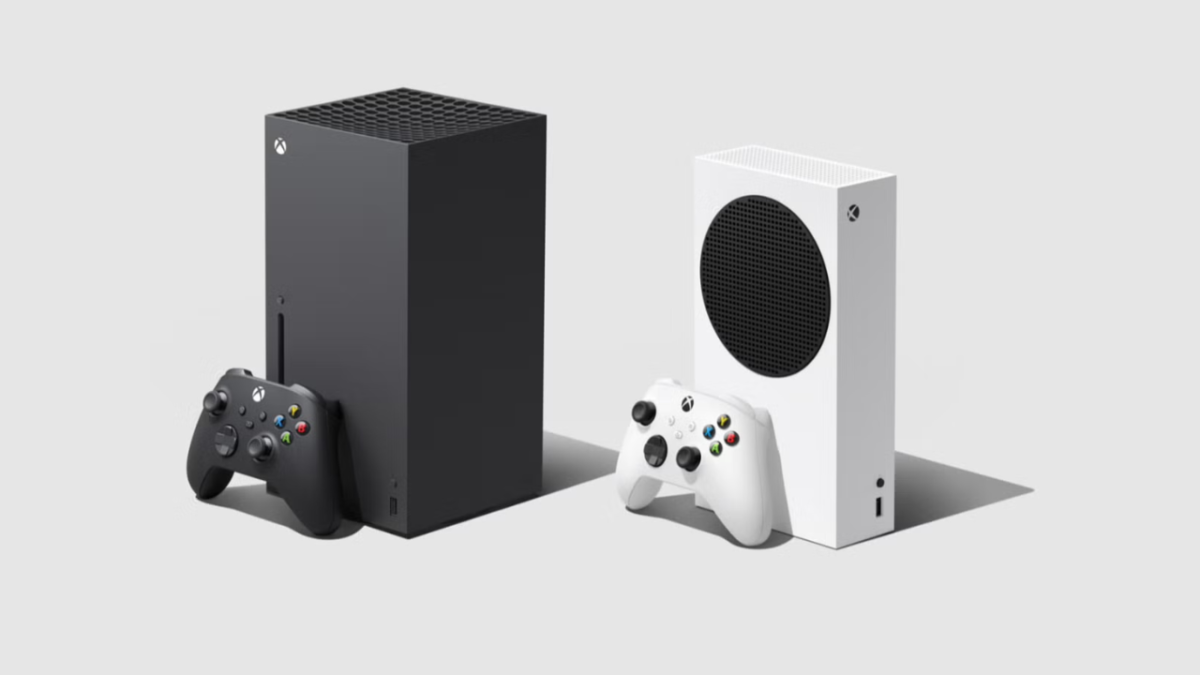It’s a new year and that means plenty of new deals for Xbox fans. At the moment, there are quite a few game deals available that are worth checking out, including discounts on Star Wars Outlaws, Metaphor: ReFantazio, and Sonic X Shadow Generations, but these just scratch the surface of what’s out there. Here are the best Xbox deals available at the moment.
Best Xbox Game Deals
While the holidays and seasonal sale events may be behind us, you can still save on quite a few games to kick off the new year. At the moment, you can score some great deals on Star Wars Outlaws, Metaphor: ReFantazio, and Sonic X Shadow Generations, to name a few. You can find even more Xbox game deals below.
More Xbox Video Game Deals:
What’s Coming Soon to Xbox Game Pass
Game Pass has a nice rotation of new titles to play every month. If you’re curious about what’s in store for the rest of January, we’ve got you covered. The Xbox Game Pass January wave 2 lineup is:
- Lonely Mountains: Snow Riders (Cloud, PC, and Xbox Series X|S) – January 21 Game Pass Ultimate, PC Game Pass
- Flock (Console) – January 22 Now with Game Pass Standard
- Gigantic: Rampage Edition (Cloud, Console, and PC) – January 22 Game Pass Ultimate, PC Game Pass, Game Pass Standard
- Kunitsu-Gami: Path of the Goddess (Console) – January 22 Now with Game Pass Standard
- Magical Delicacy (Console) – January 22 Now with Game Pass Standard
- Tchia (Xbox Series X|S) – January 22 Now with Game Pass Standard
- The Case of the Golden Idol (Console) – January 22 Now with Game Pass Standard
- Starbound (Cloud and Console) – January 22 Game Pass Ultimate, Game Pass Standard
- Eternal Strands (Cloud, Console, and PC) – January 28 Game Pass Ultimate, PC Game Pass
- Orcs Must Die! Deathtrap (Cloud, PC, and Xbox Series X|S) – January 28 Game Pass Ultimate, PC Game Pass
- Shady Part of Me (Cloud, Console, and PC) – January 29 Game Pass Ultimate, PC Game Pass, Game Pass Standard
- Sniper Elite: Resistance (Cloud, Console, and PC) – January 30 Game Pass Ultimate, PC Game Pass
- Citizen Sleeper 2: Starward Vector (Cloud, PC, and Xbox Series X|S) – January 31 Game Pass Ultimate, PC Game Pass
- Far Cry New Dawn (Cloud, Console, and PC) – February 4 Game Pass Ultimate, PC Game Pass, Game Pass Standard
New Xbox Consoles Available Now
Two new variants of Xbox Series X are now available alongside a new 1TB Series S. If you’re interested in picking one of these up, the fancy 2TB Galaxy Black Series X will set you back $599.99, the 1TB All-Digital Robot White Xbox Series X can be bought for $449.99, and the 1TB Robot White Xbox Series S goes for $349.99.
Best Xbox Accessory Deals
From headphones to controllers, there are quite a few Xbox accessory deals to check out right now as well. Some of our favorites include a limited time deal on the Turtle Beach Stealth 700 Gen 3 headset, a 25% discount on the Xbox Elite Series 2 controller, and a nice little 18% discount on the Sky Cipher Xbox wireless controller.
What is Xbox’s Recent Controversy?
The recent discomfored surrounding Xbox can be isolated to a recent round of brutal layoffs. Microsoft is closing a number of Bethesda studios, including Redfall maker Arkane Austin, Hi-Fi Rush and The Evil Within developer Tango Gameworks, and more in devastating cuts at Bethesda. Alpha Dog Games, maker of mobile game Mighty Doom, will also close. Roundhouse Studios will be absorbed by The Elder Scrolls Online developer ZeniMax Online Studios. Microsoft, currently valued at over $3 trillion, did not say how many staff will lose their jobs, but significant layoffs are inevitable.
Microsoft’s announcement of the cuts at Bethesda come over three months after the company announced plans to cut 1,900 staff from its video game workforce, and amid a boom time for Bethesda’s Fallout series following the breakout hit Prime Video TV show.
When Should I Buy an Xbox?
In general, it is advisable to keep an eye out for sales and restocks throughout the year, as availability has improved since the initial launch of the console. Unlike the Nintendo Switch, there is no specific recommendation to wait for a sale regardless of the time of year. Instead, it’s a good idea to monitor various retailers and online platforms for restock announcements and promotional offers.
However, certain events like Black Friday or other holiday seasons may bring about unique bundles, discounts, or promotional deals specifically for the Xbox Series X. These bundles may include additional games, accessories, or exclusive limited editions. While quantities for such promotions might be limited, they can provide an opportunity to get more value for your purchase. See our guide to Xbox Series X prices for more info.
Xbox Series X or Xbox Series S?
Choosing between the Xbox Series X and Xbox Series S ultimately depends on your gaming preferences, budget, and specific requirements. Let’s compare the two consoles to help you make an informed decision:
1. Performance: The Xbox Series X is the more powerful option, offering native 4K gaming, higher graphical fidelity, and faster loading times. It has more advanced hardware, including a larger storage capacity. On the other hand, the Xbox Series S targets a lower price point and offers a less powerful performance, targeting 1440p resolution gaming and upscaling to 4K.
2. Price: The Xbox Series S is more affordable compared to the Xbox Series X. If budget is a significant factor for you, the Xbox Series S provides a cost-effective option while still delivering a next-generation gaming experience. For example, the Series S can play Starfield at 1440p 30fps (vs 4K 30fps on Series X).
3. Storage: The Xbox Series X comes with a larger internal storage capacity, allowing you to store more games directly on the console. The Xbox Series S, however, has a smaller storage capacity, which means you may need to manage your game library more actively or rely on external storage solutions.
4. Disc Drive: The Xbox Series X includes a disc drive, enabling you to play physical game discs and enjoy a wider range of media options, including Blu-ray and DVD playback. The Xbox Series S, in contrast, is a digital-only console, meaning you can only play games downloaded from the digital store.
5. Graphics and Performance: While both consoles support ray tracing, the Xbox Series X provides a more immersive and visually impressive experience due to its superior hardware capabilities. If you prioritize cutting-edge graphics and want the best performance available, the Xbox Series X is the preferable choice.
Consider your gaming preferences, budget, and whether you prioritize top-of-the-line performance or cost-effectiveness. If you have a 4K TV, want the most powerful console, and are willing to invest more, the Xbox Series X is the recommended option. If you have a lower budget, a 1080p or 1440p TV, and don’t mind sacrificing some performance, the Xbox Series S offers excellent value for money.
With how expensive gaming is getting in 2024, we’re trying to save you as much money as possible on the games and other tech you actually want to buy. We’ve got great deal roundups available for all major platforms such as Switch and Xbox, and keep these updated daily with brand new offers. If you’re trying to keep costs down while maintaining your favorite hobby, stay tuned for more incredible discounts.
Robert Anderson is a deals expert and Commerce Editor for IGN. You can follow him @robertliam21 on Twitter.
















